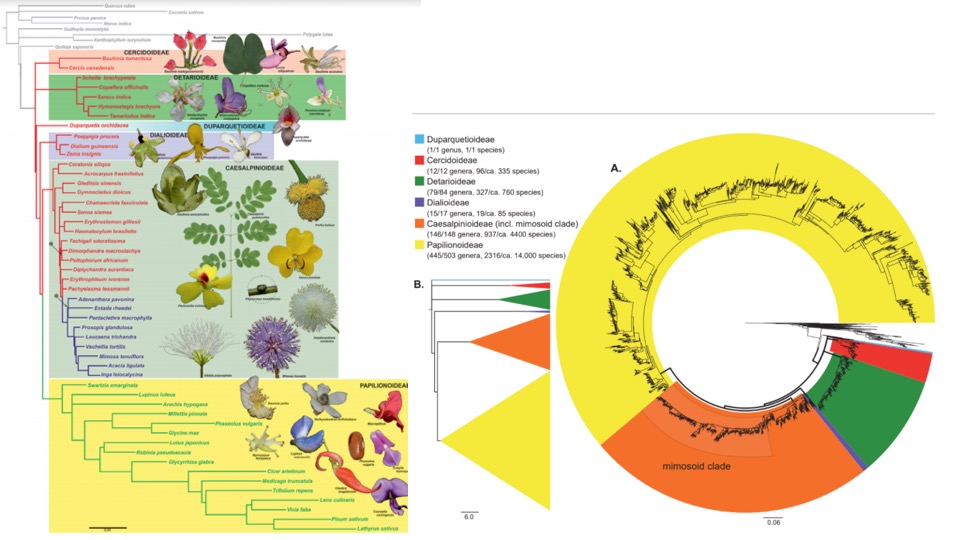Coordinators: Felix Forest (Royal Botanic Gardens, Kew, U.K.) and Erik Koenen (University of Zurich, Switzerland).
Introduction
The Phylogenomic Working Group brings together teams from across the legume research community that have been investigating phylogenetic relationships within the family at different taxonomic levels using genomic-scale data sets. The principal aim of the group is to compile a well-sampled robust generic-level phylogenetic tree for the family, to serve as the basis for the progressive reconstruction of a complete species-level phylogenetic tree for the entire family. This generic-level phylogenetic framework is crucial to improve the subfamilial classification of the family (i.e. delimitation of tribes) and test the monophyly of genera to help with re-delimitation of genera suspected to be non-monophyletic.
Strategy
The group also aims to find ways to harmonize the different target enrichment (hybrid capture) gene sets and approaches that have been developed for the family. At least five different target enrichment probe sets have been developed for specific legume clades, including Detarioideae, Caesalpinioideae (incl. the mimosoid clade), Cercidoideae and Papilionoideae. In addition, the hybrid capture approach developed for the Nitfix project led by Pam and Doug Soltis (University of Florida) is being applied to a large sample of more than 9000 species across legumes. The Angiosperms353 universal bait set developed for the Plant and Fungal Trees of Life project at Royal Botanic Gardens, Kew is currently being used to sequence these genes for a sample of genera covering all major legume groups, with particular focus on subfamily Papilionoideae and its early-diverging lineages. The Working Group maintains an overview of the various legume gene sets that are being sequenced and has assessed overlap amongst them. Because the overlap in genes targeted by these various approaches is minimal, there are limited possibilities of directly combining the different data sets.
Future plans
Given the advanced state of the work undertaken by several groups who have designed the probe sets enumerated above, phylogenomics within legumes is advancing rapidly on several fronts, with well sampled studies emerging for all subfamilies. Given that the monophyly of each subfamily is well established, these parallel efforts will each provide valuable information on phylogenetic relationships within the family.
Join the Working Group
If you would like to discuss and share information about legume phylogenomics initiatives, please contact Felix Forest or Erik Koenen
